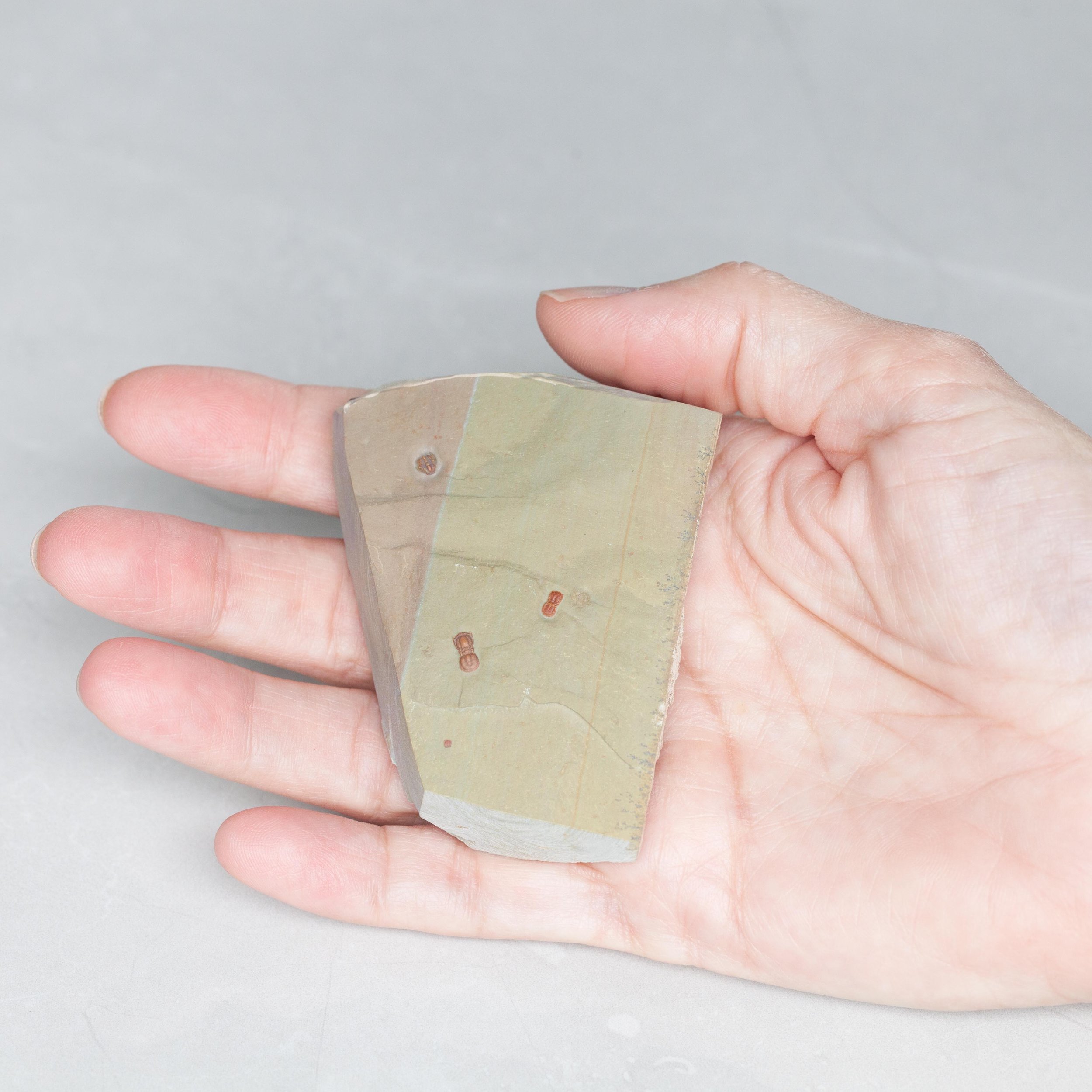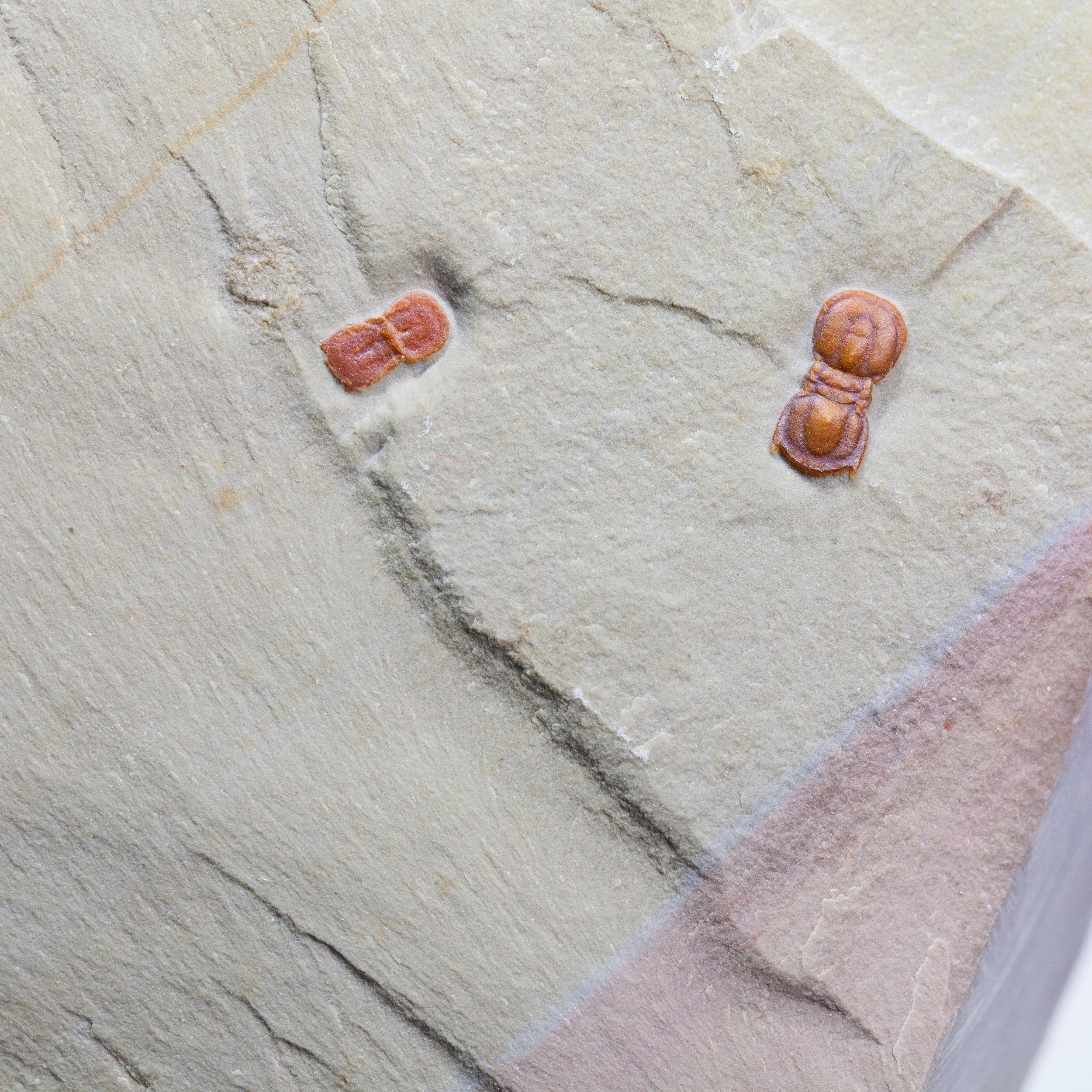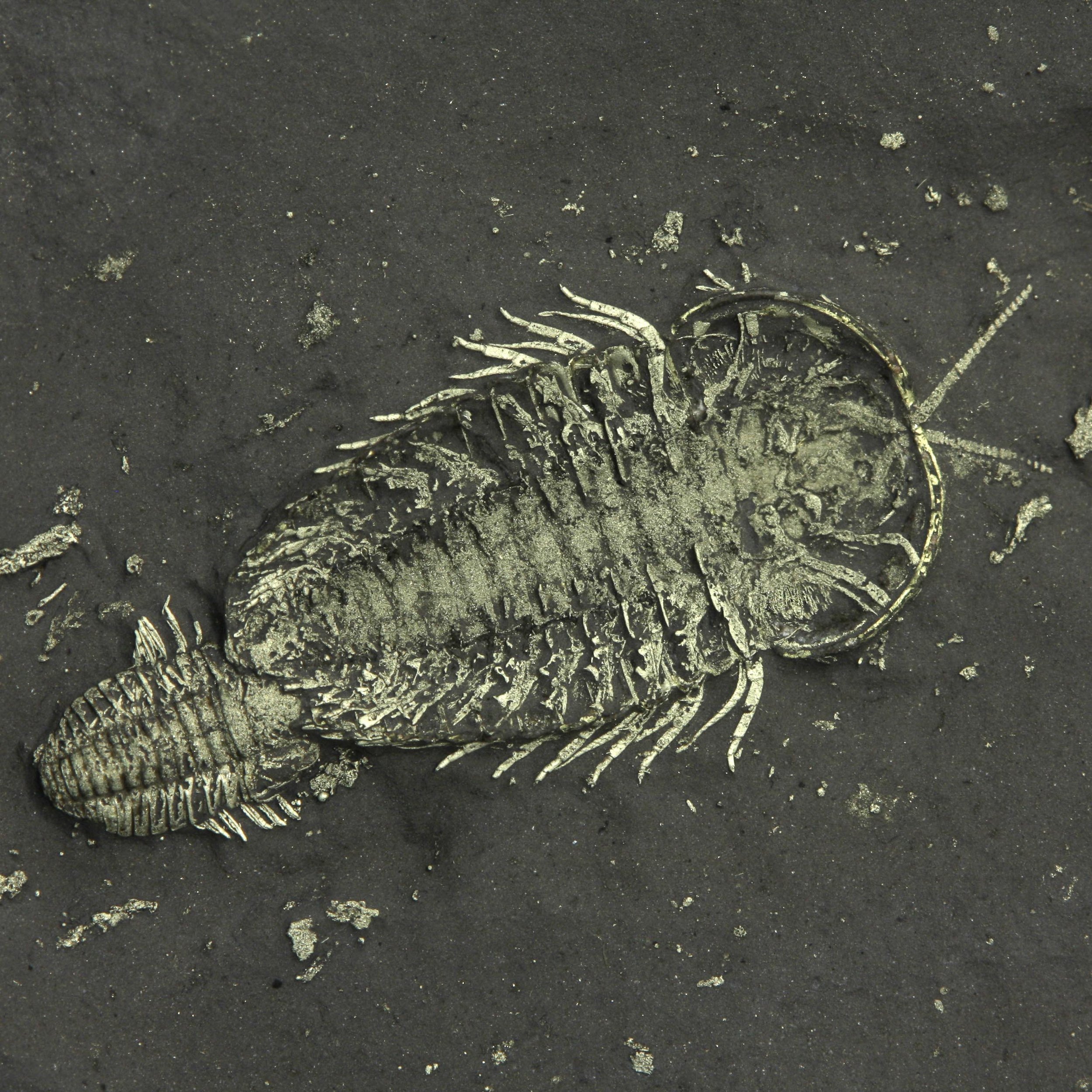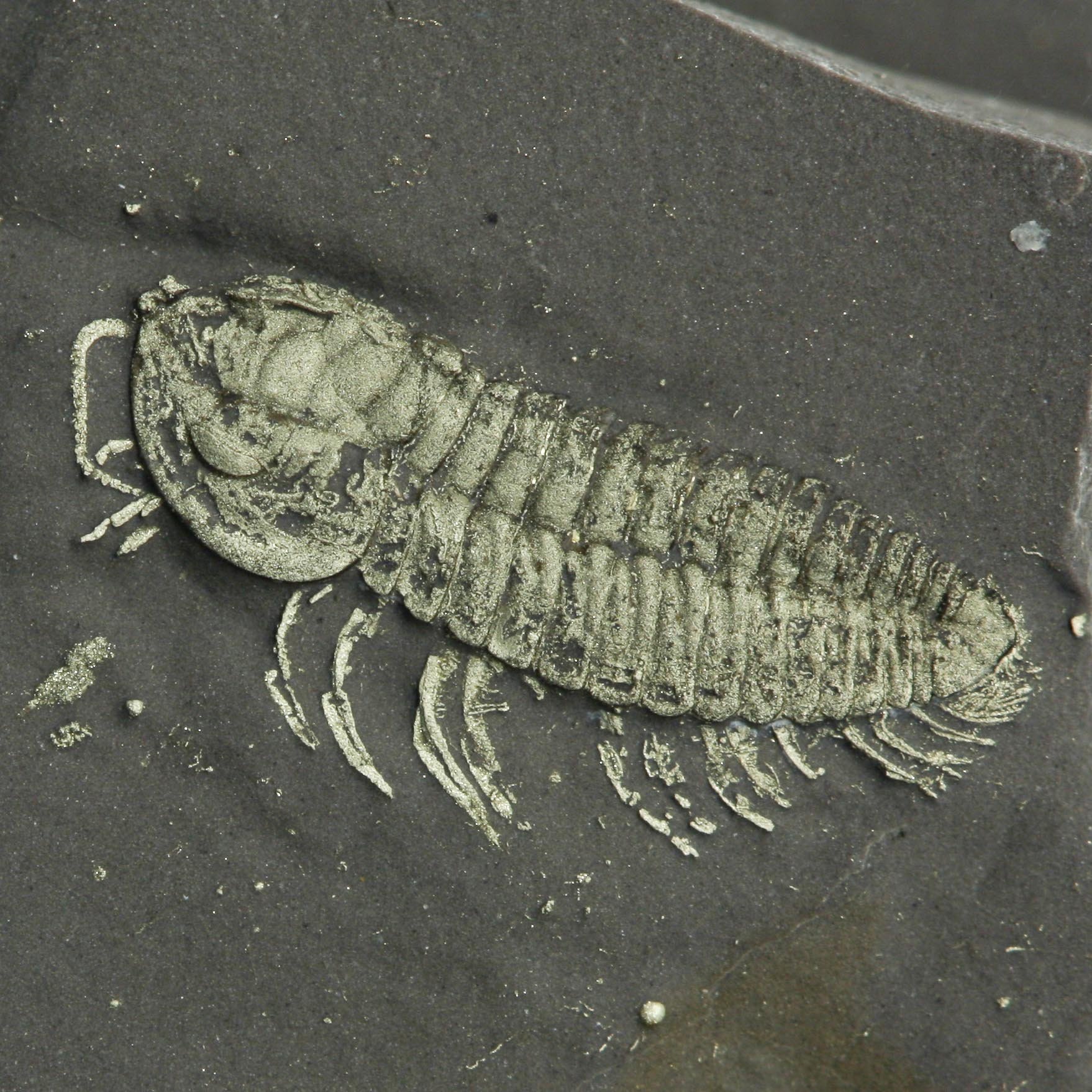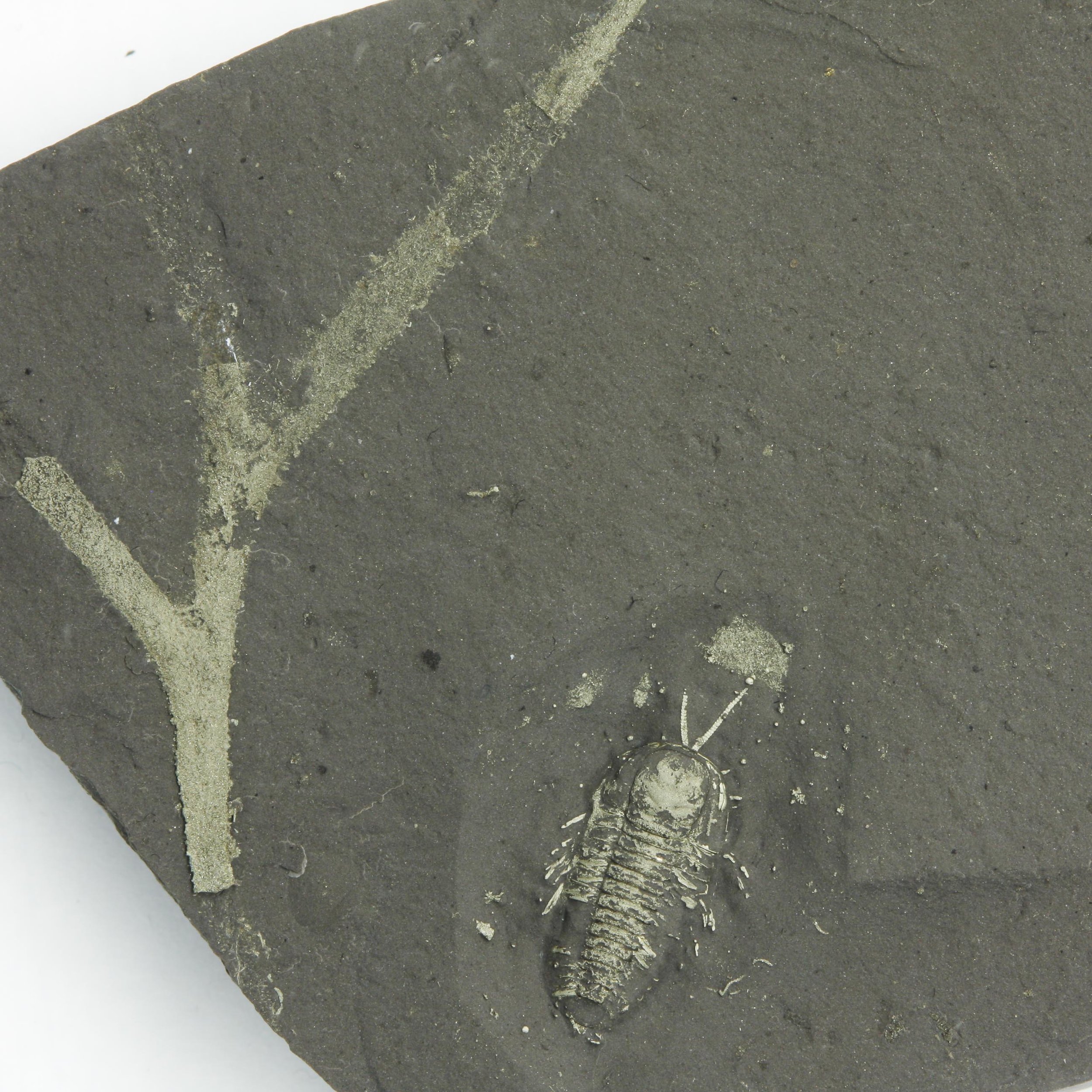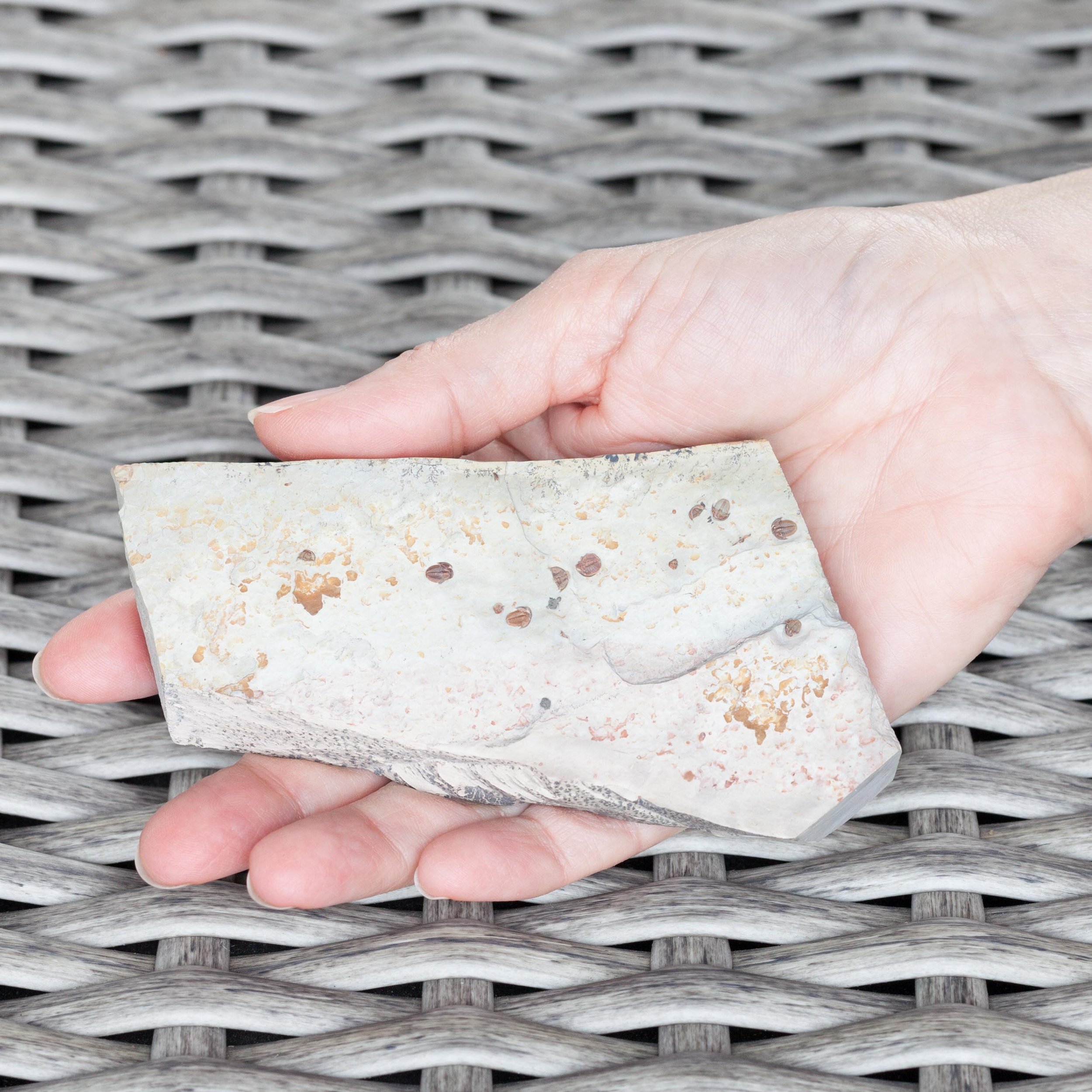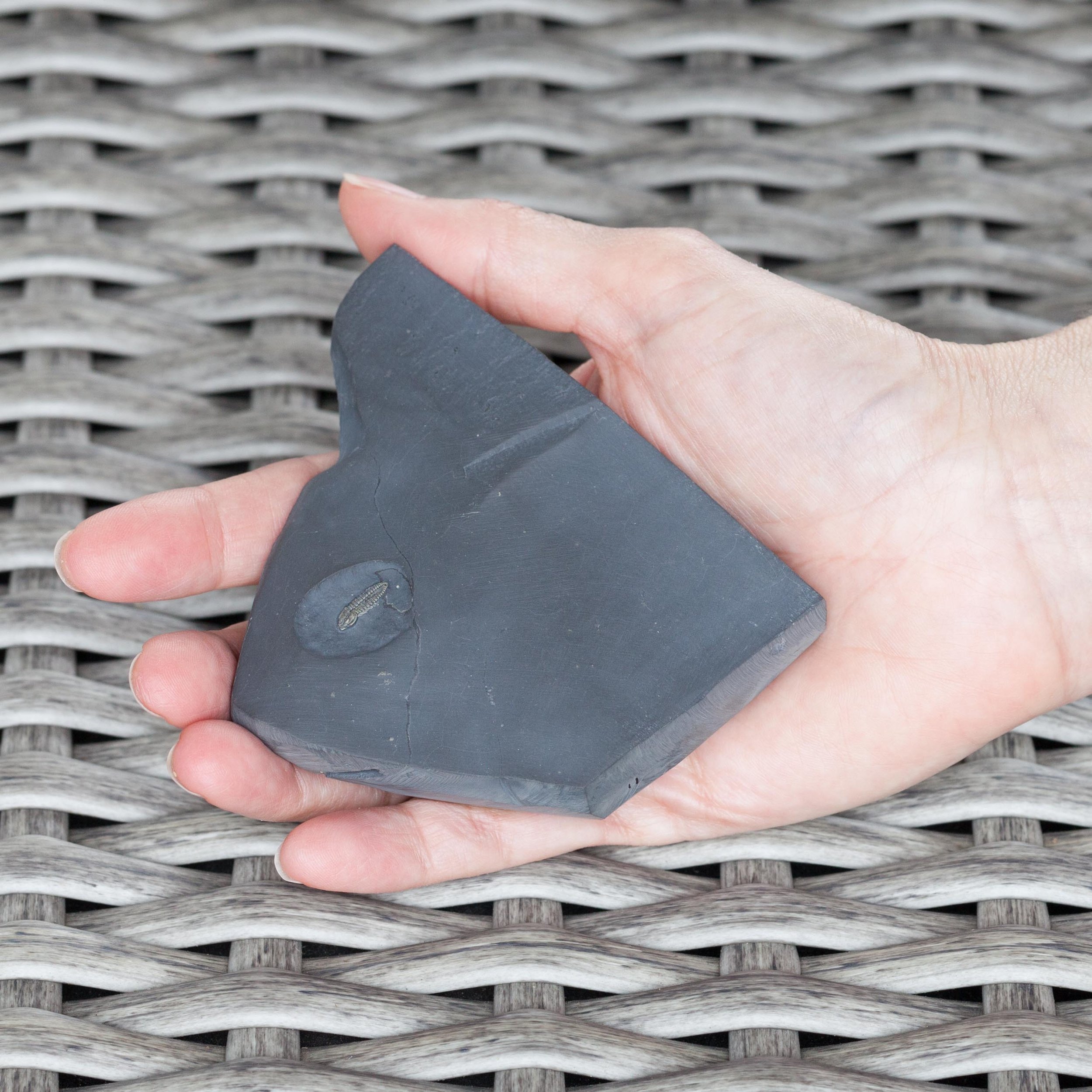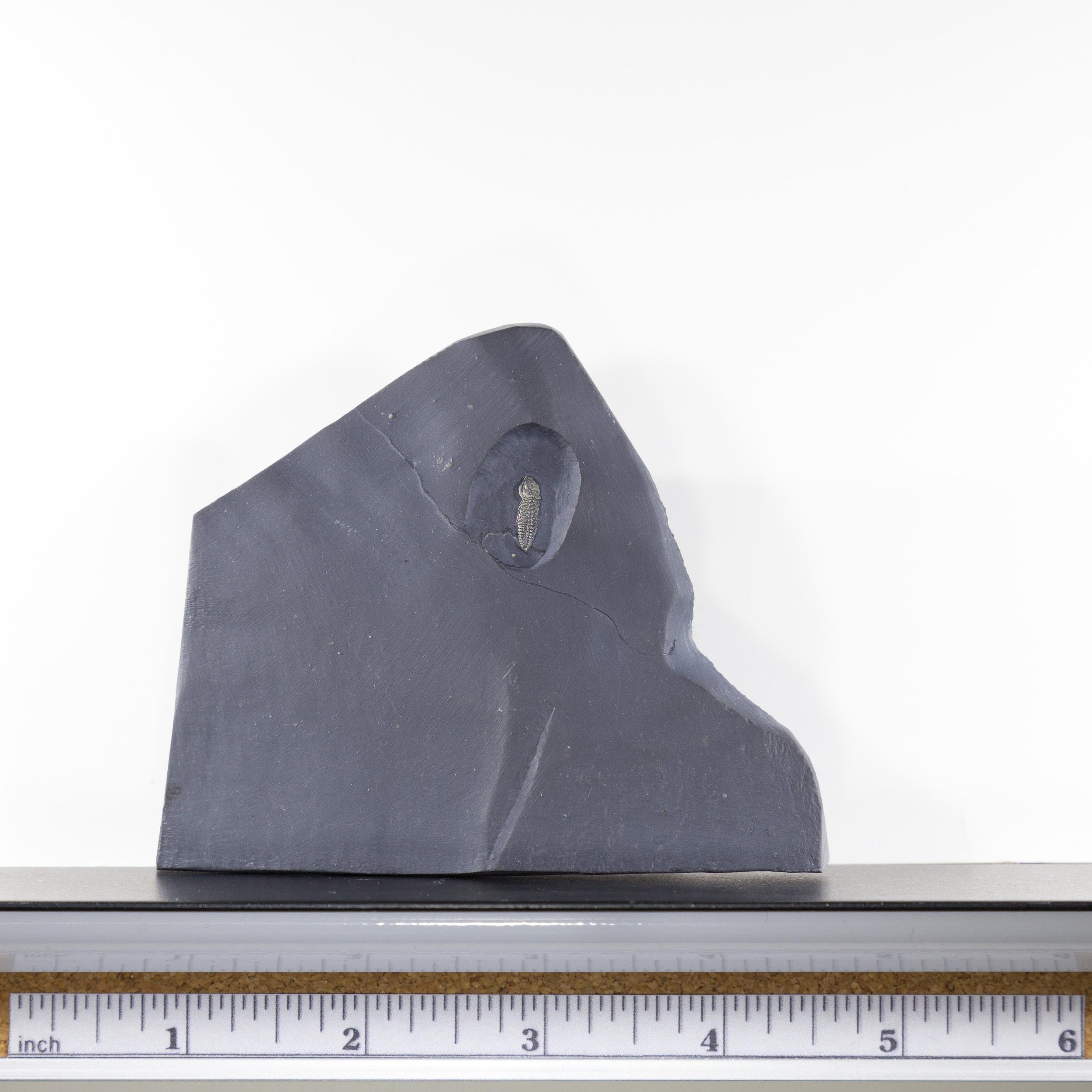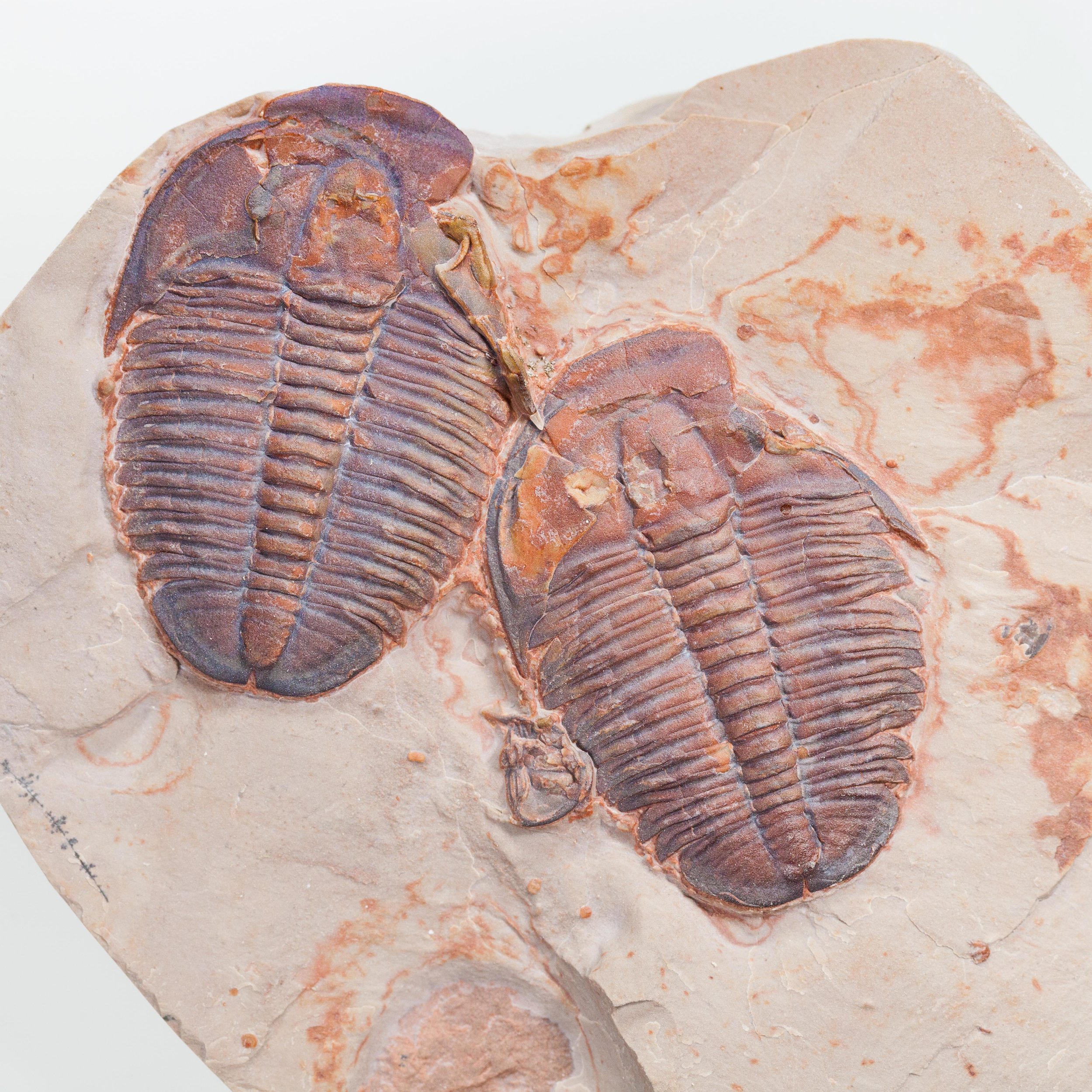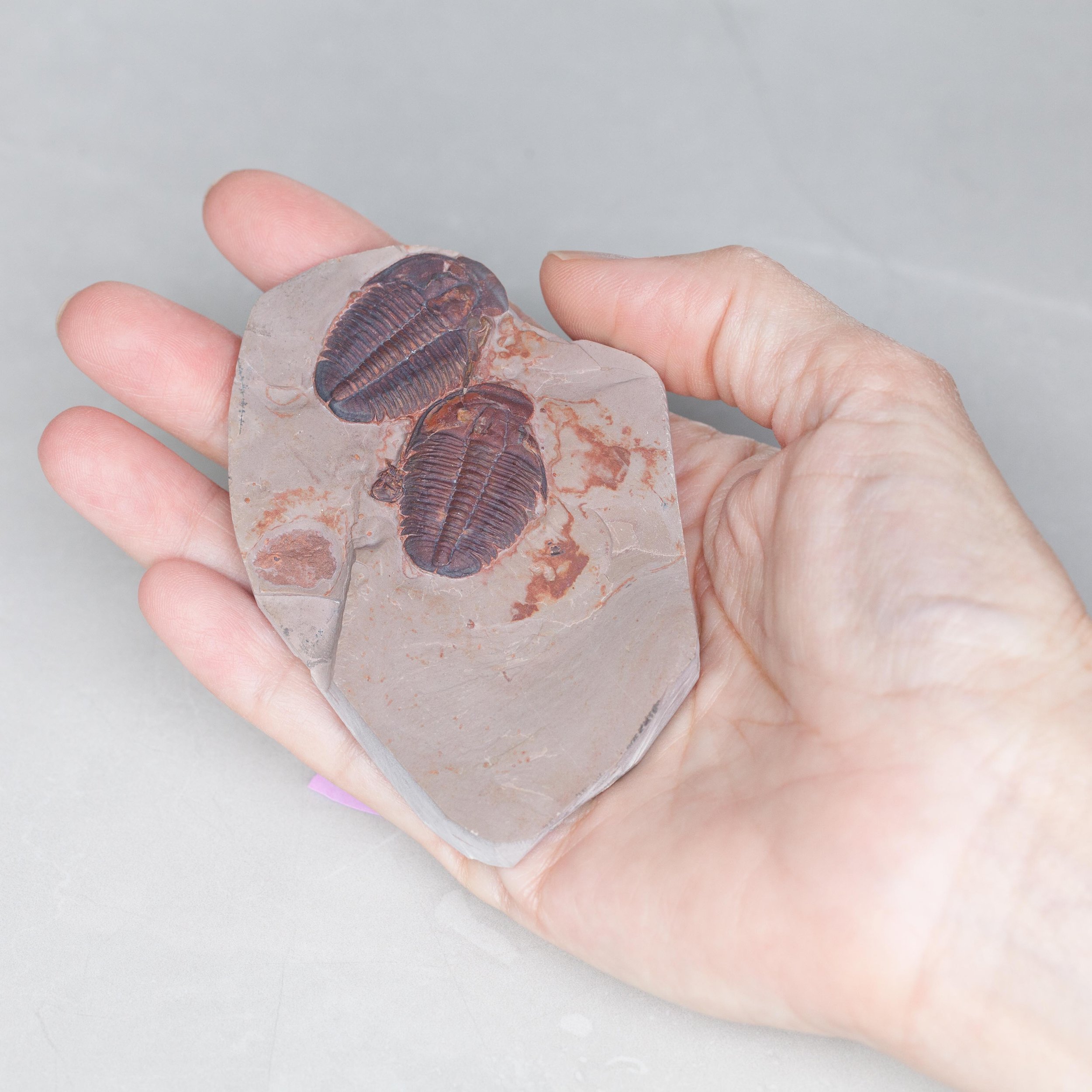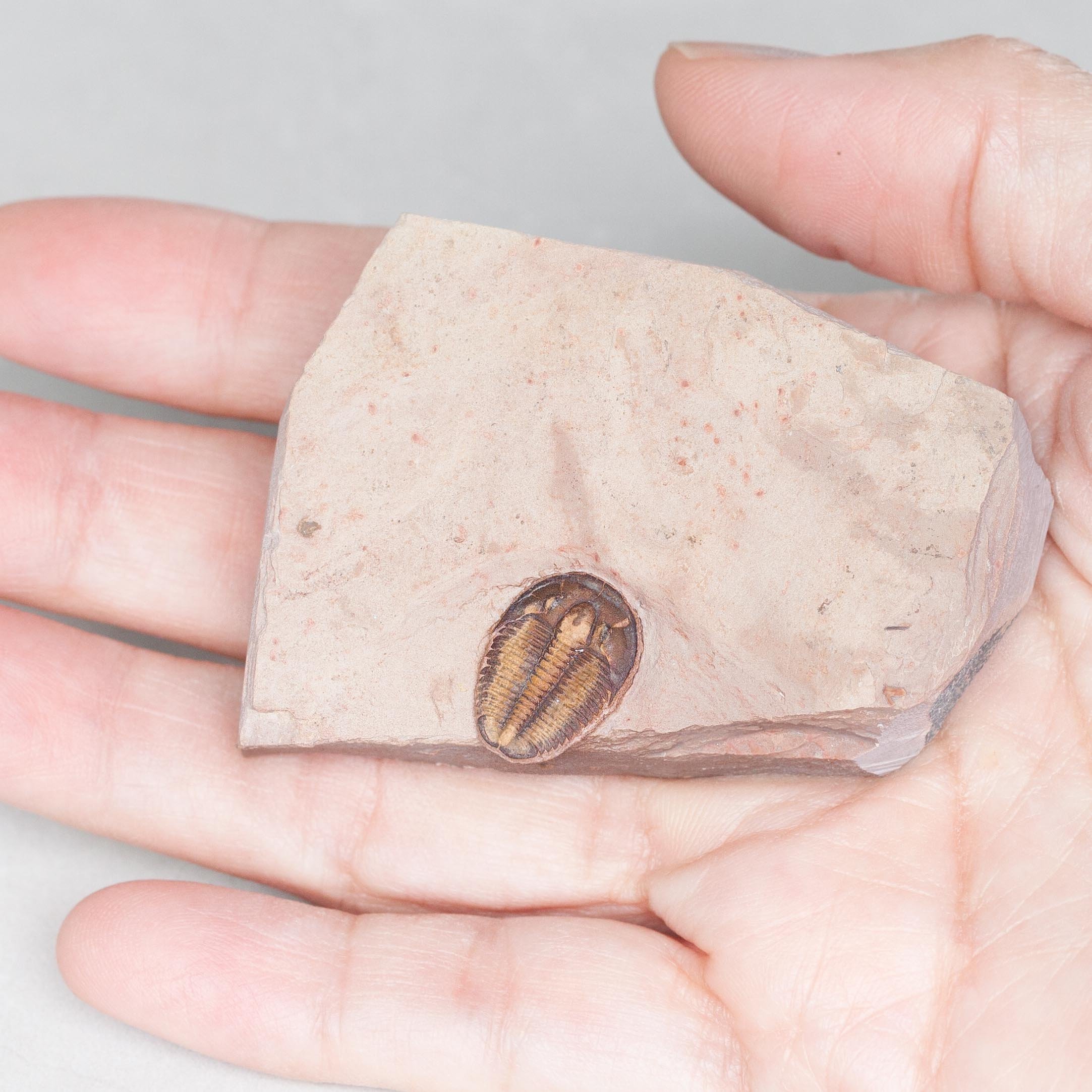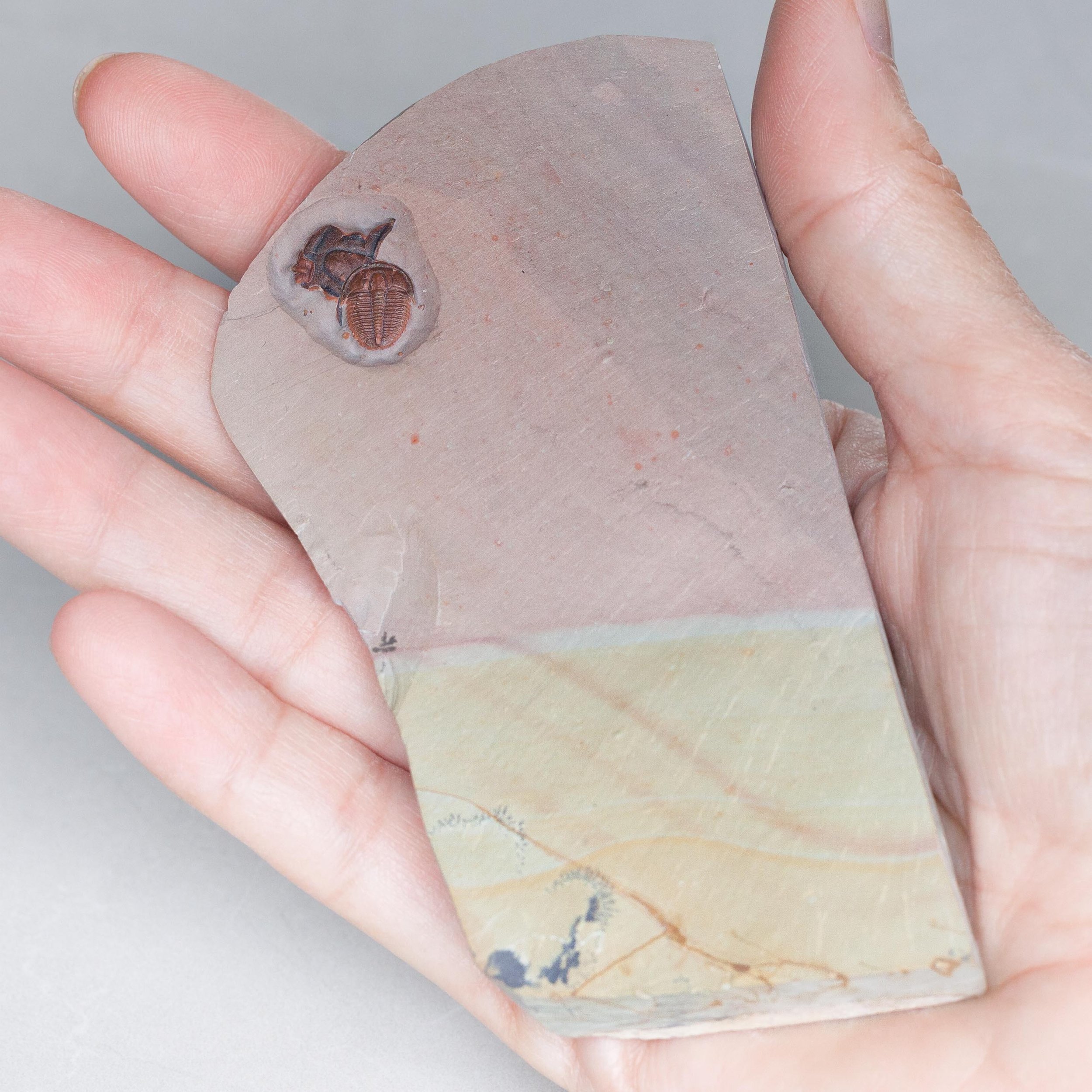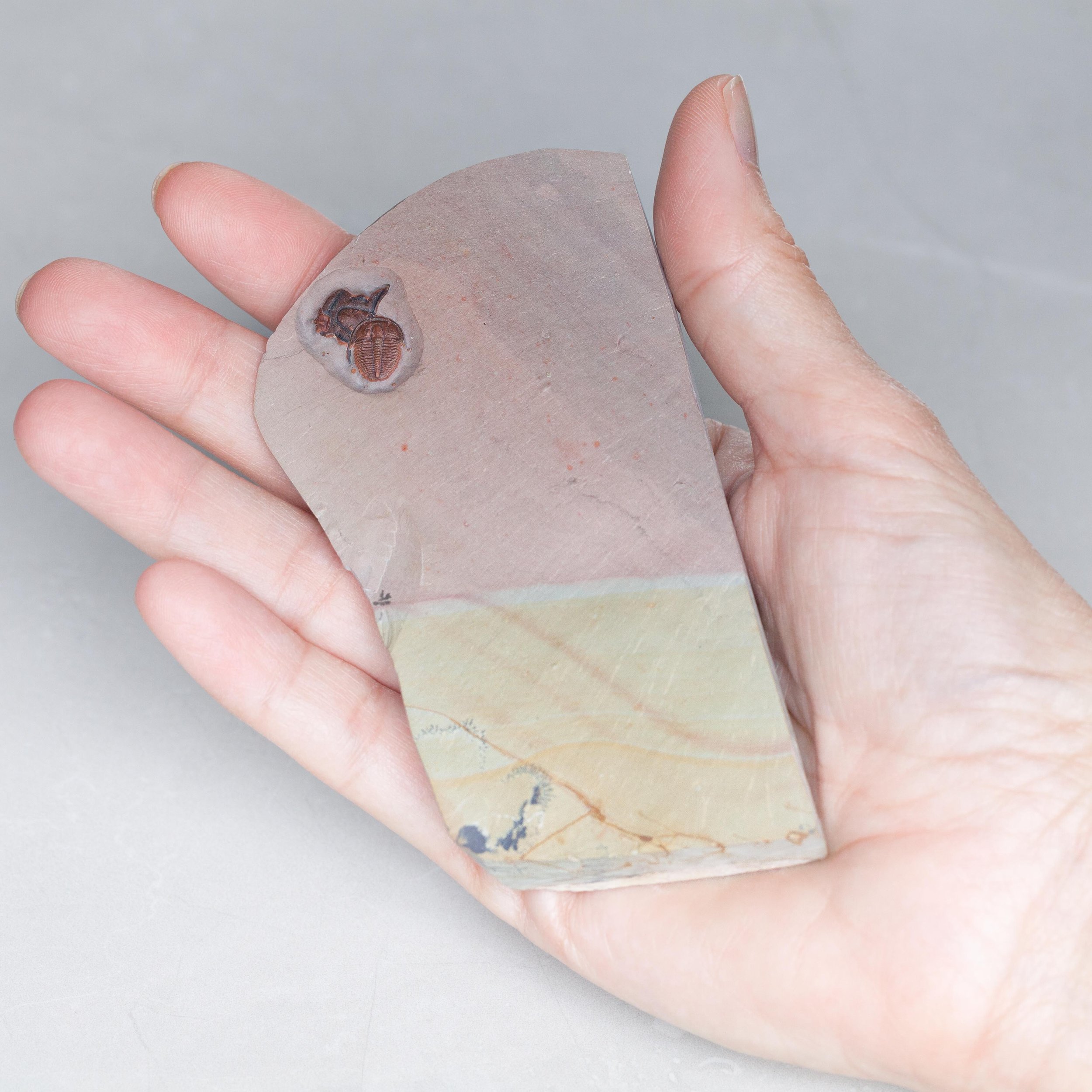Itagnostus interstrictus - Bolaspidella housensis
Vendor: Gold Bugs
SKU Number: SQ5657605
A fine example of two species from the Middle Cambrian "Red Beds", Wheeler Shale Formation, Utah.
This piece has a nice association of the agnostid trilobite Itagnostus interstrictus, formerly known as Peronopsis, and a small spiny Bolaspidella housensis. The matrix has an attractive zoned color banding of green and purple.
Full dimensions are listed below.
Additional Information
The Wheeler Shale formation was named by Charles Doolittle Walcott. The Wheeler is a Konzentrat-Lagerstätte of soft tissued organisms preserved as carbonaceous film on calcareous shale, shaley limestone, mudstone and thin flaggy limestone.
Bollaspidella is a member of the order: Ptychopariida, a large heterogeneous order of trilobite containing some of the most primitive species known. The earliest species occurred in the second half of the Lower Cambrian, and the last species did not survive the Ordovician–Silurian extinction event.
References:
Wheeler Shale Formation
Charles Doolittle Walcott
Ptychopariida
Agnostids were small sightless trilobites that first appeared in the Cambrian period. They are assumed to have had a benthic (bottom-dwelling) mode of life, due to their association with other benthic organisms. The lack of sight would have been a disadvantage for pelagic (free-swimming) living trilobites.



